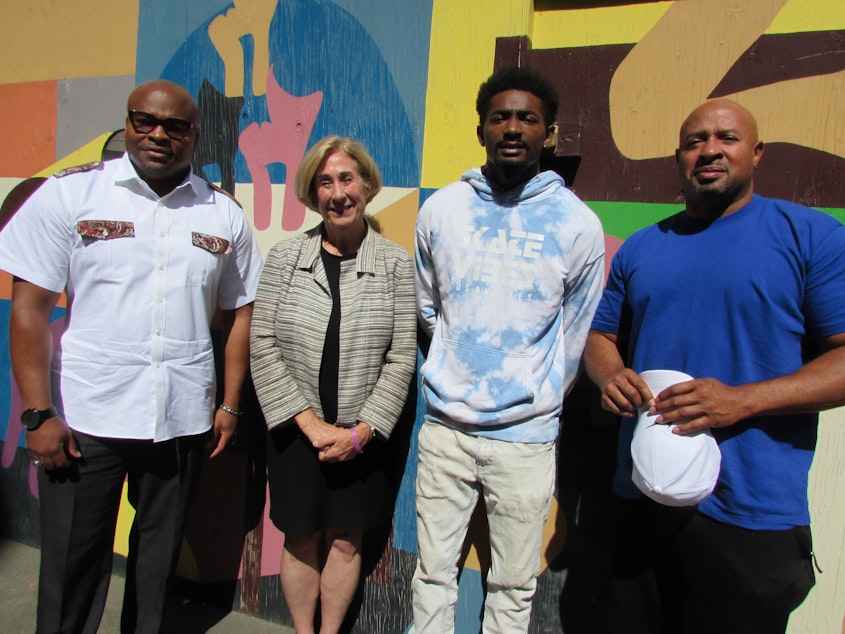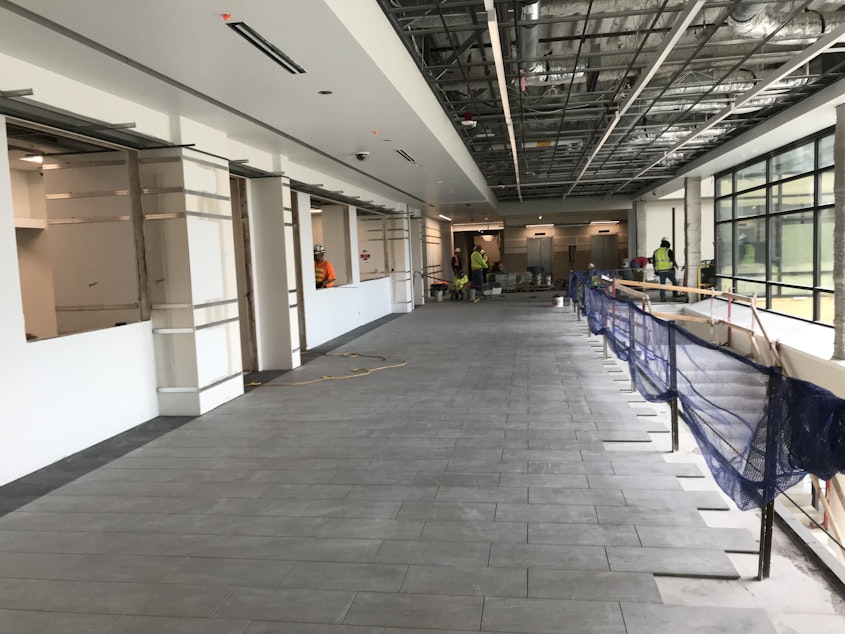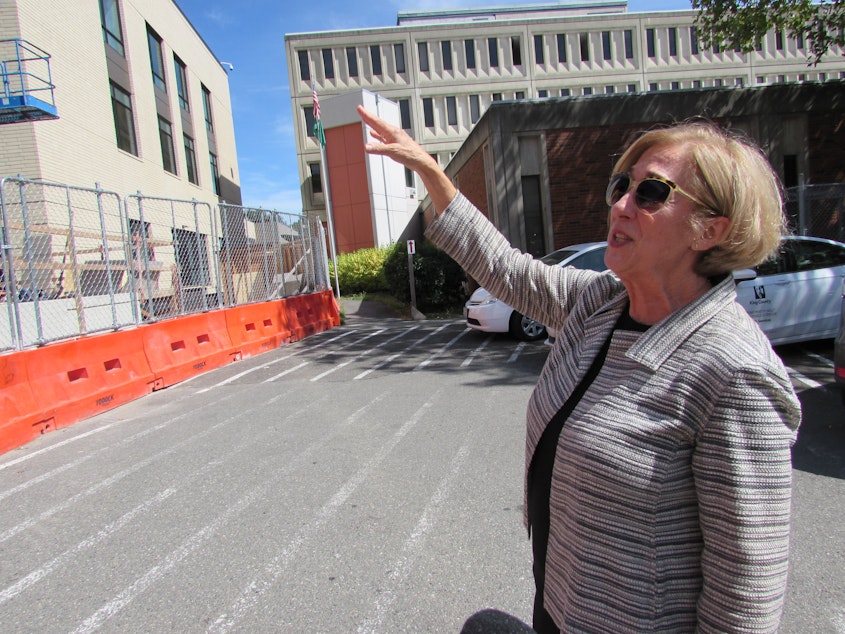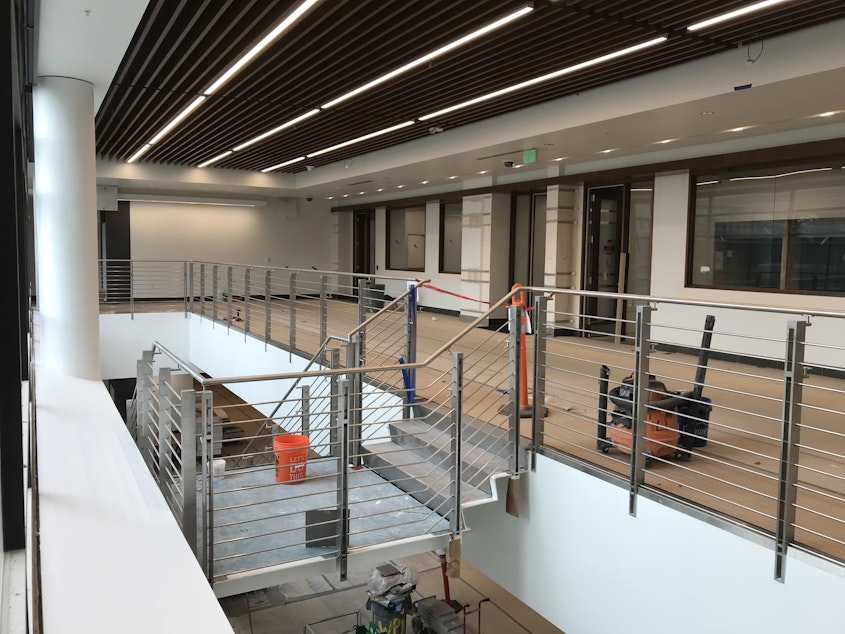These advocates hope beds stay empty at new kid jail in King County

One of King County's most controversial building projects is nearing completion.
The Children and Family Justice Center in Seattle has been the focus of lawsuits and protests because it includes a juvenile detention center.
Judges and youth advocates say their focus will be on continuing to work for zero youth detention.
The new facility will be larger and more light-filled than the cramped building it replaces. In addition to courtrooms, it will offer more spaces for lawyers and service providers to connect with families.
But it’s the building’s 112 secure juvenile detention beds that became the sticking point for opponents, who say their inclusion is at odds with research on the lasting harms of incarceration for youth.
KUOW asked some stakeholders for their perspectives on the new building, and met with them at the existing Youth Services Center in the Central District.
Sponsored
King County Superior Court Judge Judith Ramseyer, the chief juvenile court judge, said the new building furthers the court’s movement from a punitive to a rehabilitative model over the last 20 years.
The average daily population in King County’s youth detention has declined in recent decades to about 50. That includes youth under juvenile court supervision; more recently youth under 18 charged as adults have been transferred there as well. That transfer caused a slight uptick in the average population from 2017 to 2018.
It's still one of the lowest youth detention rates in the country. But Ramseyer said the new building needs enough beds so youth can be separated by age, gender and seriousness of their offense.
“One thing to keep in mind is that as a public building it is constructed for the next 50 years or more,” she said. “You can’t spend this much money and go to this much trouble and build something that’s based strictly in the present. There has to be some anticipation for population growth.”
She noted that not all youth there are incarcerated; some non-secure beds are used by kids referred by law enforcement while they address issues of family violence.
Sponsored
Dominique Davis is CEO and founder of the group Community Passageways, which seeks to keep youth out of the criminal justice system. He said regardless of the new building, he wants the focus to be on prevention, and keeping kids out of those beds.
“The ones that are in there, we want to get them out, and the ones that are out here, we want to keep them out,” Davis said.
“So we’re going to be in the courtrooms, we’re going to be in the detention centers, we’re going to be in the jails," he said. "I’m going to keep building relationships with the judges, and we’re going to keep having conversations.”

Keeping kids out of those beds means working "upstream" in schools and other places where kids first encounter problems, said Derrick Wheeler-Smith. He directs the county’s new Zero Youth Detention project.
Wheeler-Smith said he’s been working with one King County school district that suspended more than 35 kindergartners last year.
Sponsored
“I have no idea what a kindergartner does to be suspended,” he said.
Wheeler-Smith declined to name that district, but said they’re looking at being present in local schools in various ways.
He said that King County has made striking progress in reducing juvenile detention, but that a current challenge is to understand why progress is unequal across racial lines. "Because while those numbers have declined, disproportionality actually has risen," he said.
African-Americans make up an even greater share of detained youth, even as overall numbers are going down.
Kaeshon Adams, now 23, once faced felony charges in King County's juvenile system.
Sponsored
He said what youth need most at those moments is to be connected to a community advocate: “Just a basic plan when they get out, as far as housing, job, family needs, and then somebody that can really help them while they’re battling their court case,” he said.
Adams was sitting alone at his court hearing when Davis brought community members to support him and tell the judge his story.
“That was the first time he had adults who cared to show up,” Davis said. "The excitement in his eyes just said it all.”
The charges were eventually reduced. Now Adams volunteers and provides outreach to other young people.

Sponsored
Judge Ramseyer said the new courtrooms will provide more space for family members and supporters. The building also contains designated space for service providers.
“Finally there will be space where many of the service providers the court works with can actually have a presence in the courthouse,” she said.
Ramseyer said families need more support navigating court proceedings.
“We’d like to have volunteers, particularly people who have been through the system in one way or another," she said.
Davis said other unmet needs include more support for the parents of at-risk youth, who often have their own struggles. “There’s not a lot of programs out there that deals with the parents and the issues that the parents are going through,” he said.
And they agreed that another big need for everyone working with hungry teenagers is … food.
Every step in the system from community dinners to probation officers who meet with youth could use donated snacks and meals. Davis said existing nonprofits spend thousands of dollars on food.
“Just feeding kids alone, we just need people to help us feed the young people, that would be awesome if we could do that,” he said.

The new Children and Family Justice Center is scheduled to open in November. Construction will continue at the site, as the old Youth Services Center is torn down and replaced with landscaping and a parking garage.




